Abstract
Pigeons' choices between a reliable alternative that always provided food after a delay (i.e., 100% reinforcement) and an unreliable one that provided food or blackout equally often after a delay (i.e., 50% reinforcement) was studied using a discrete-trials concurrent-chains procedure modified to prevent choice between alternatives following a blackout outcome. Initial links were fixed-ratio 1 schedules, and terminal links were fixed-time schedules. Stimuli presented during the terminal-link delays were correlated with the food and blackout outcomes. In Experiment 1, terminal-link durations were varied. With short terminal links (i.e., 10 s), 6 of 8 subjects showed strong preference for the 50% side. As terminal-link duration increased to 30 s, preference, regardless of direction, became less extreme. In Experiment 2, the side-key location of the 50% and 100% alternatives was reversed for 3 subjects. Preference for the 50% alternative reoccurred following the key reversal. When a 5-s separation was subsequently interposed between the initial and terminal links for both alternatives, all birds reversed to a preference for the 100% side. In general, the strong preference for the 50% side was qualitatively consistent with the expectation that the procedure enhanced the conditioned-reinforcement effectiveness of the food-associated terminal-link stimulus on the 50% side. Implications of the results for various accounts of choice of the 50% alternative are discussed.
Keywords: choice, percentage reinforcement, signaled outcomes, conditioned reinforcement, delay reduction, delayed reinforcement, concurrent chains, key peck, pigeons
Full text
PDF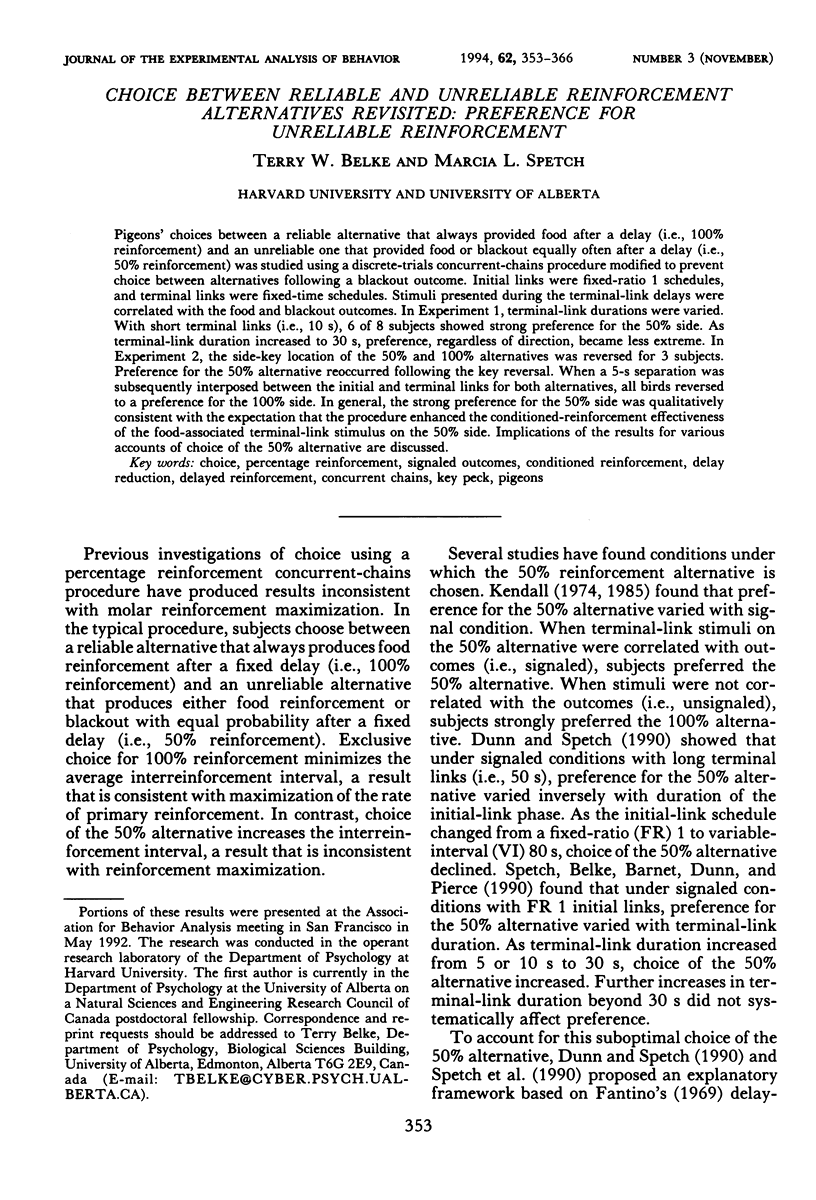
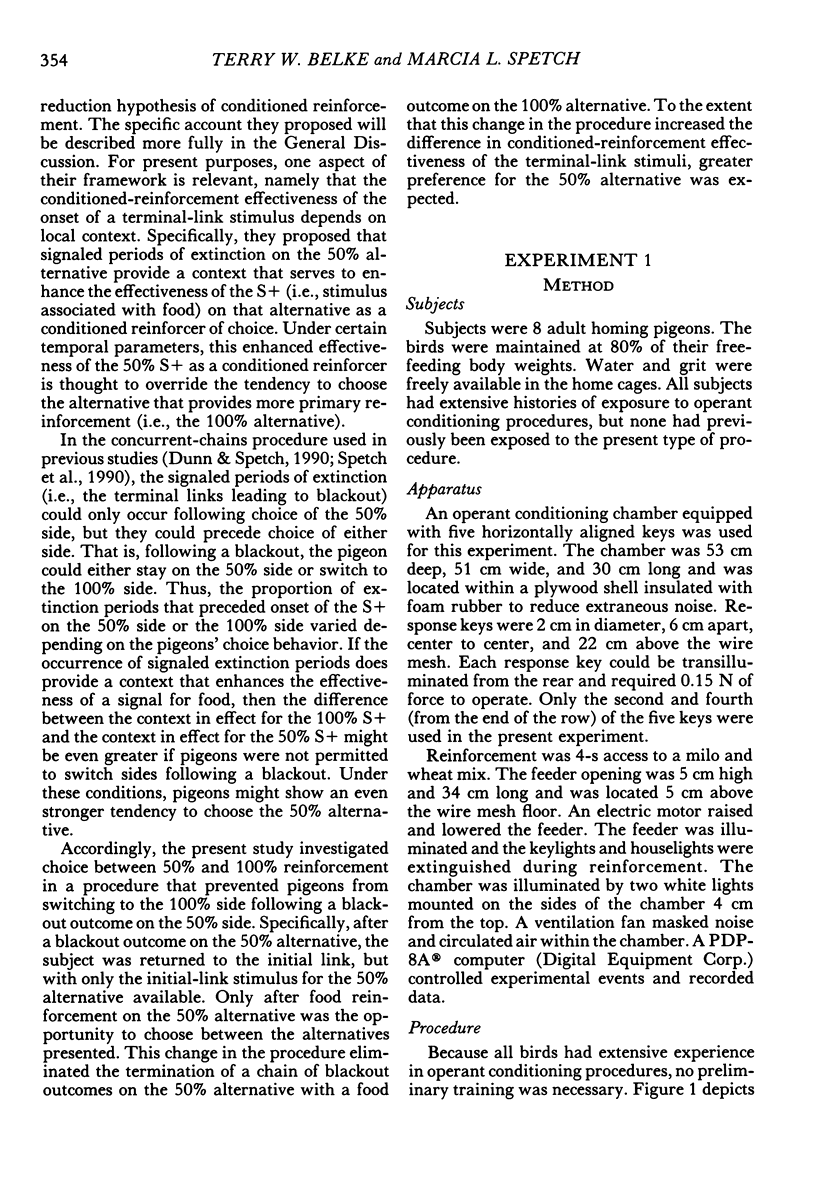
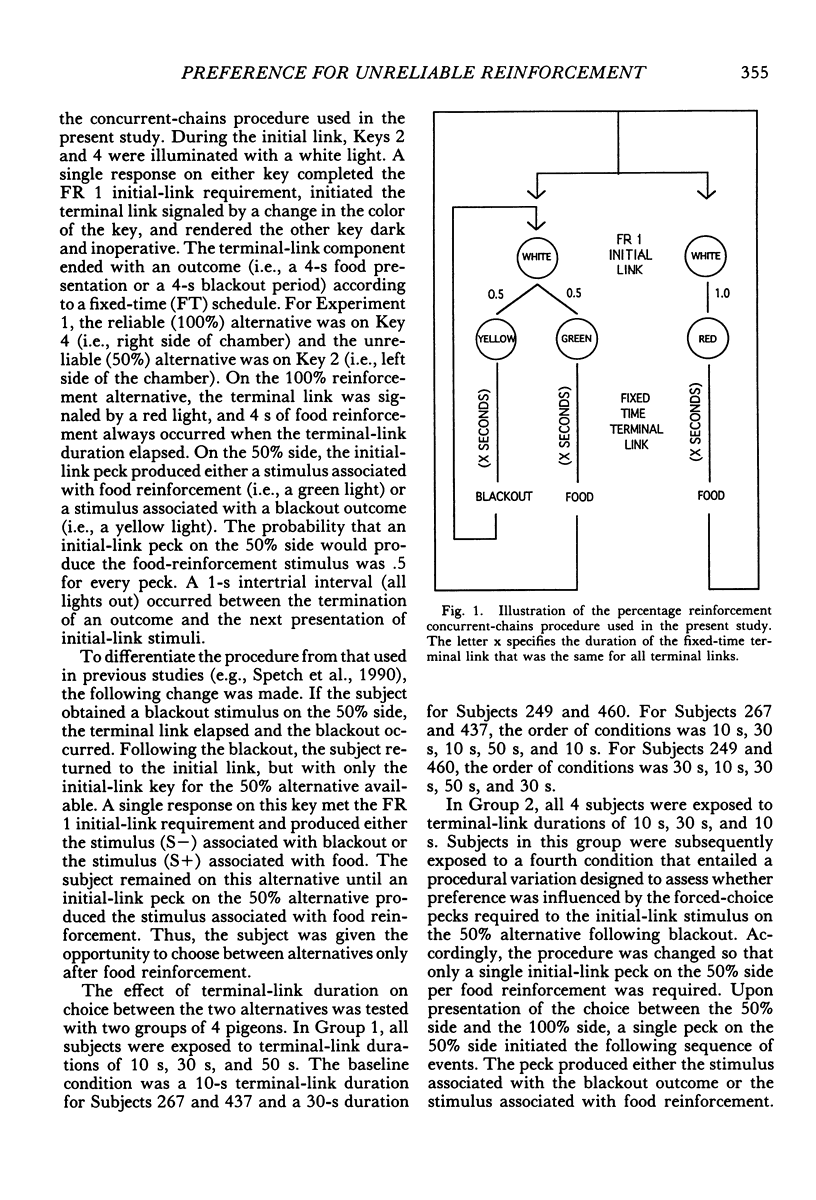
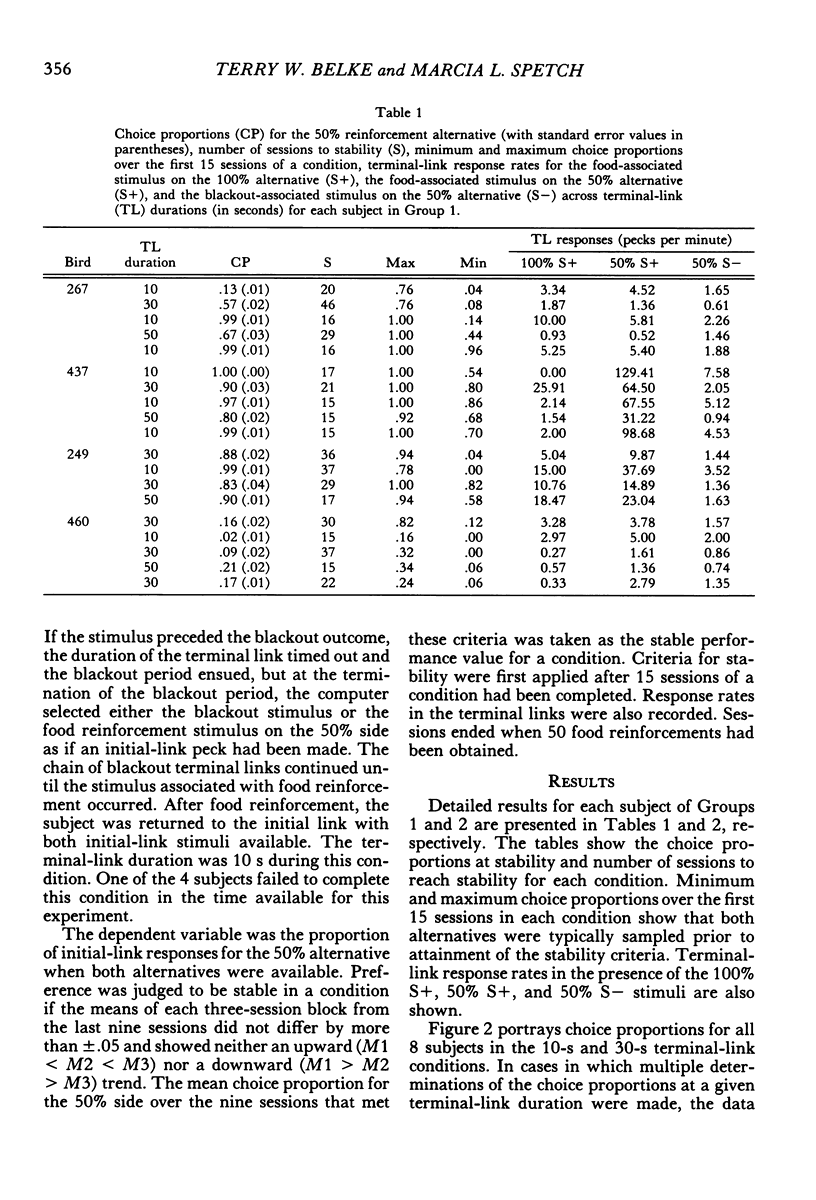
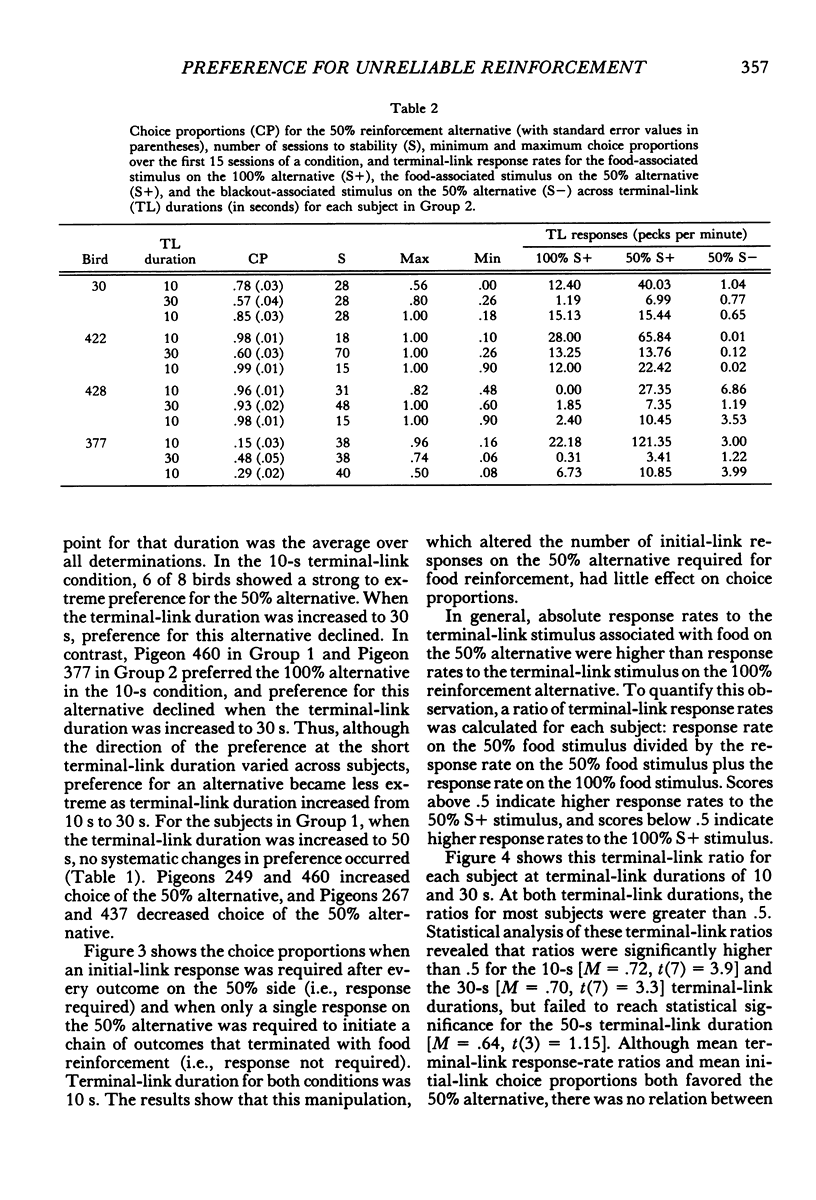
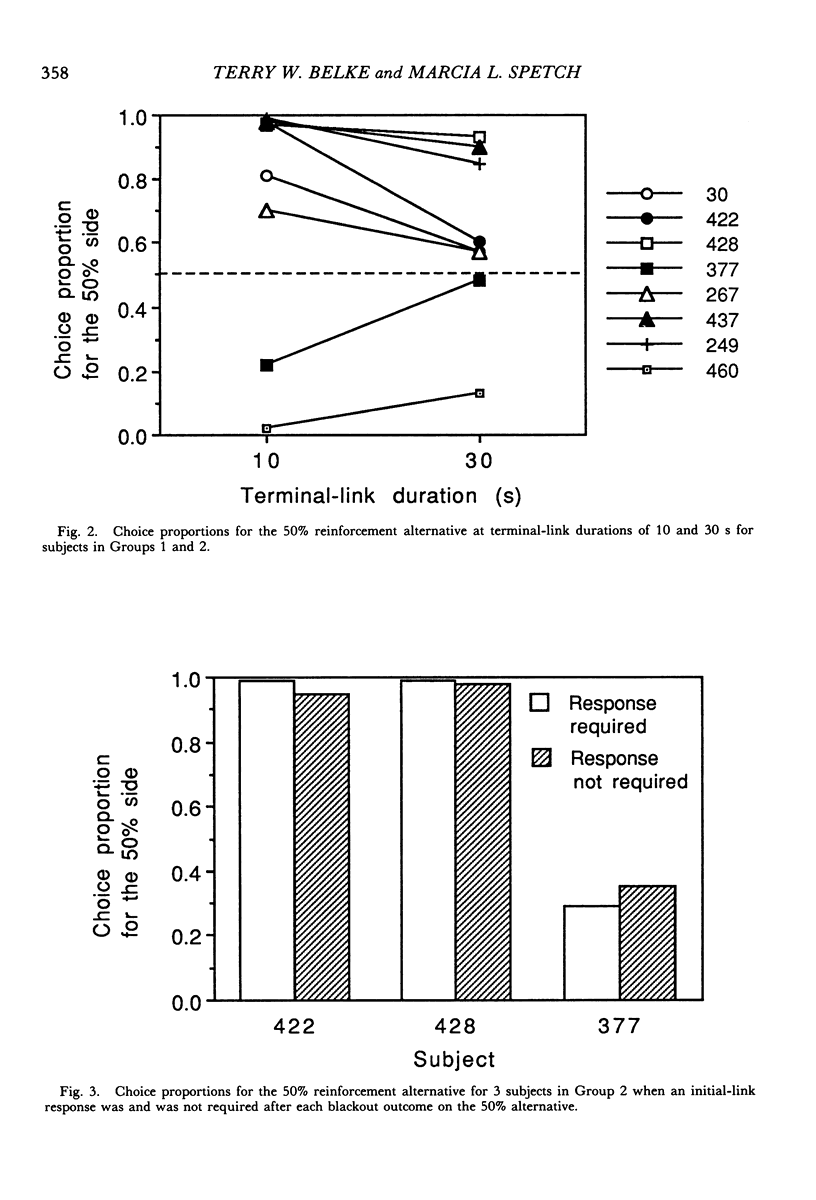
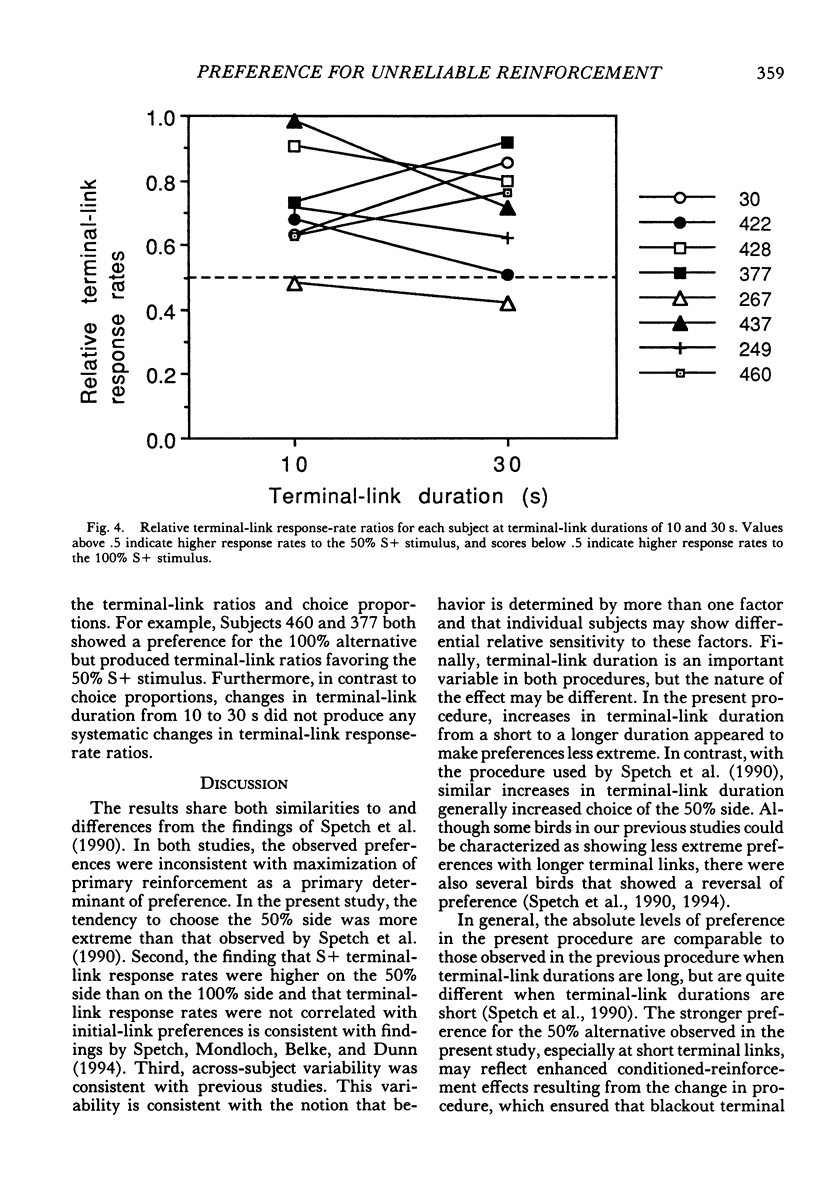
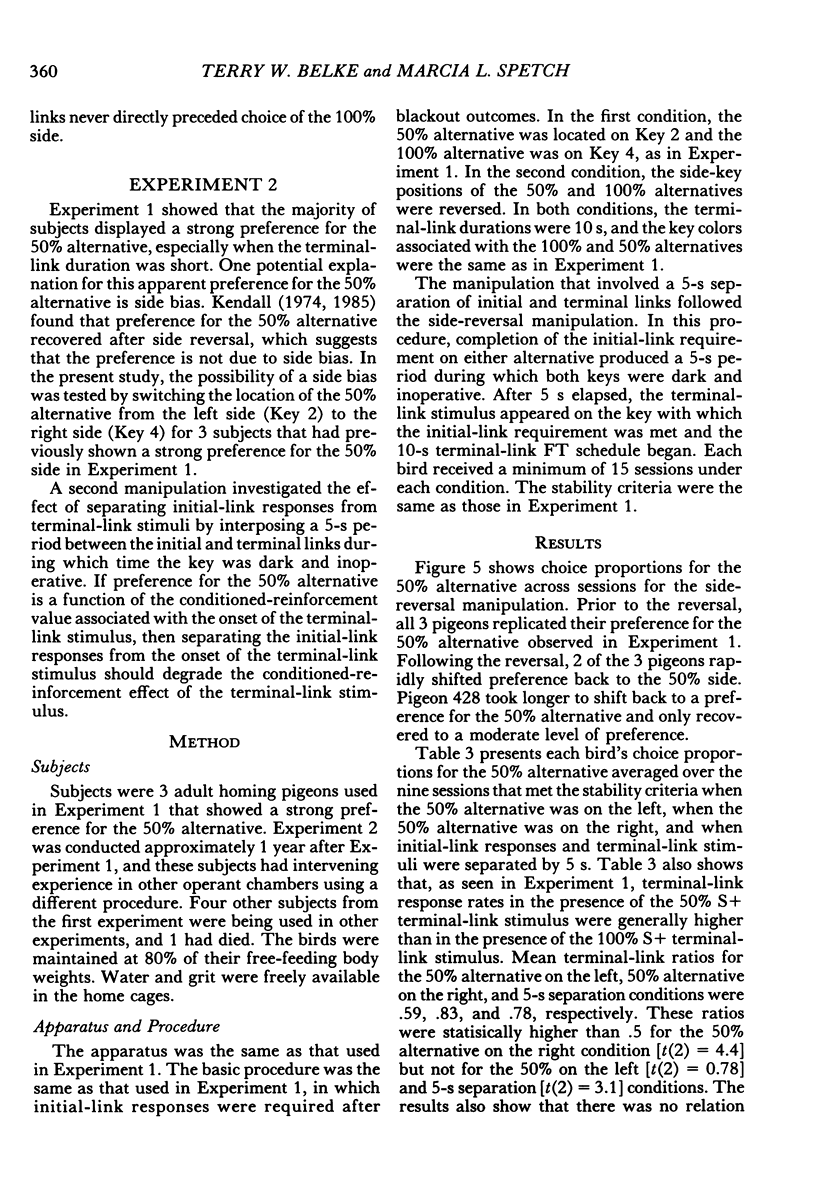
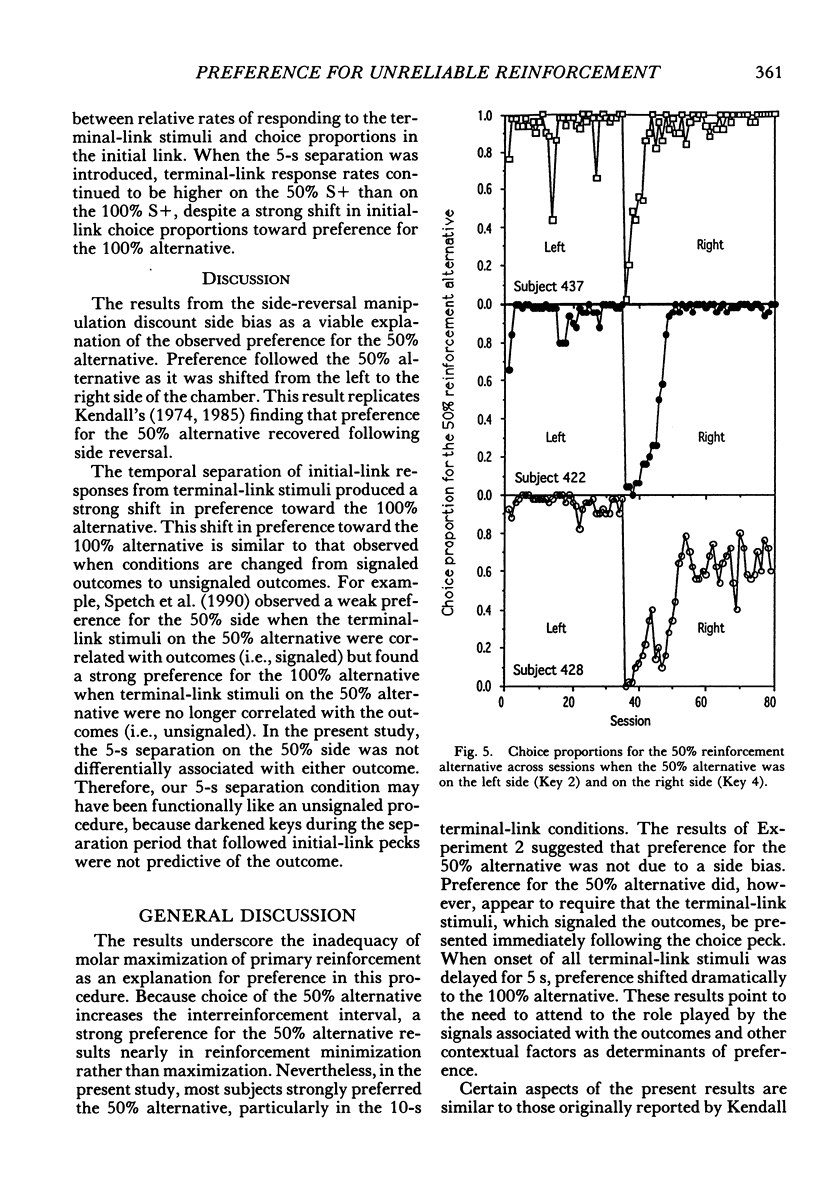
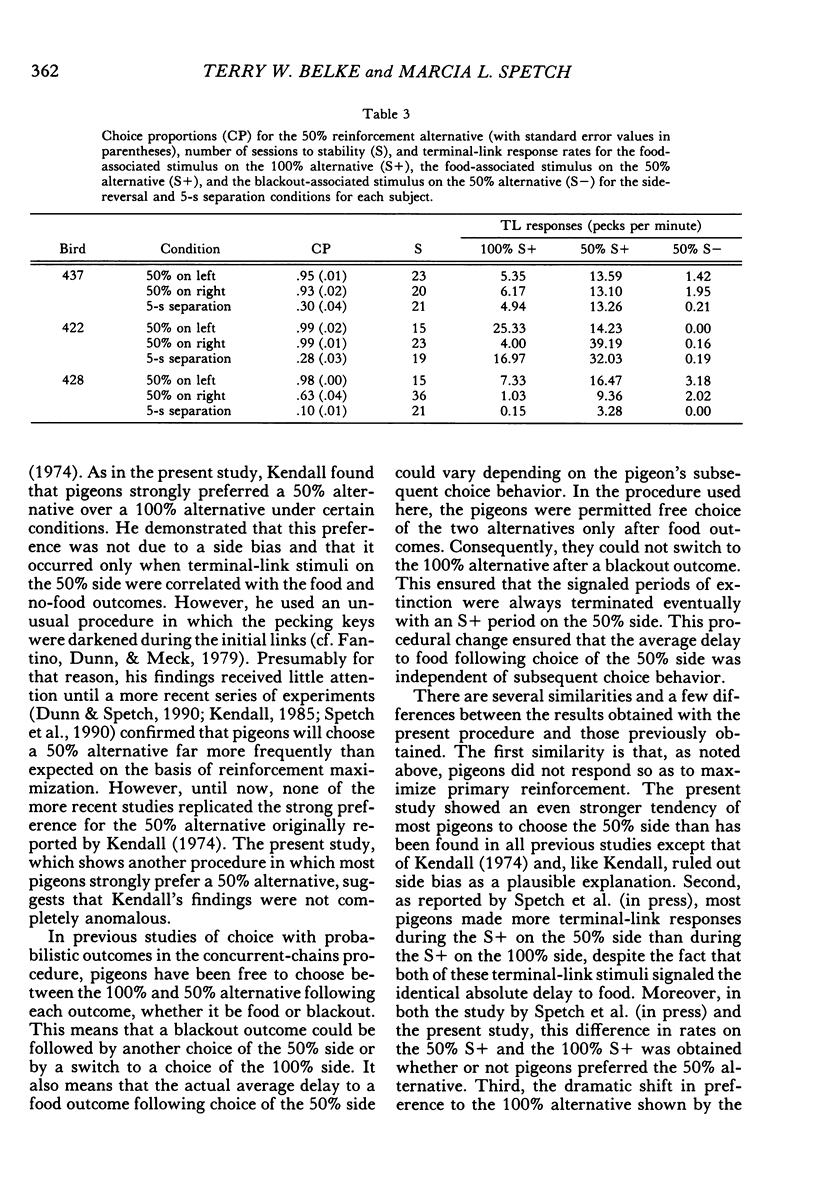
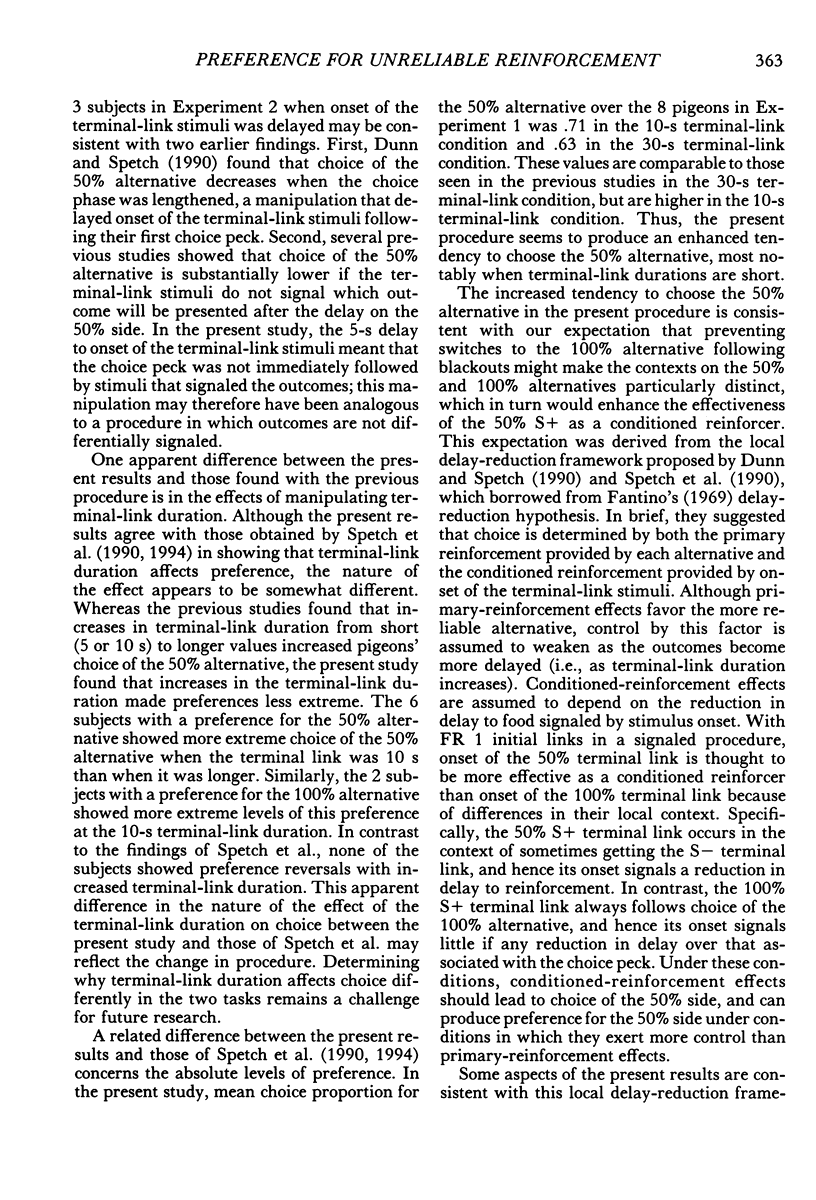
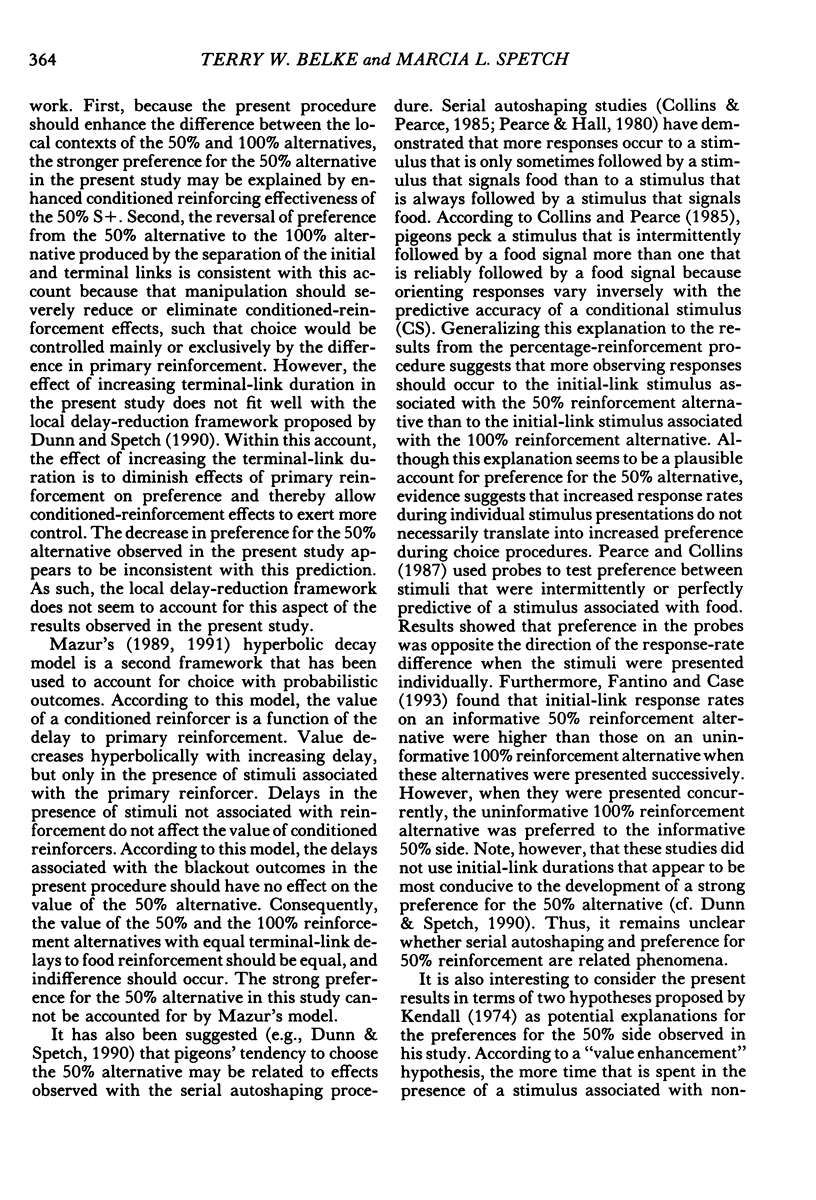
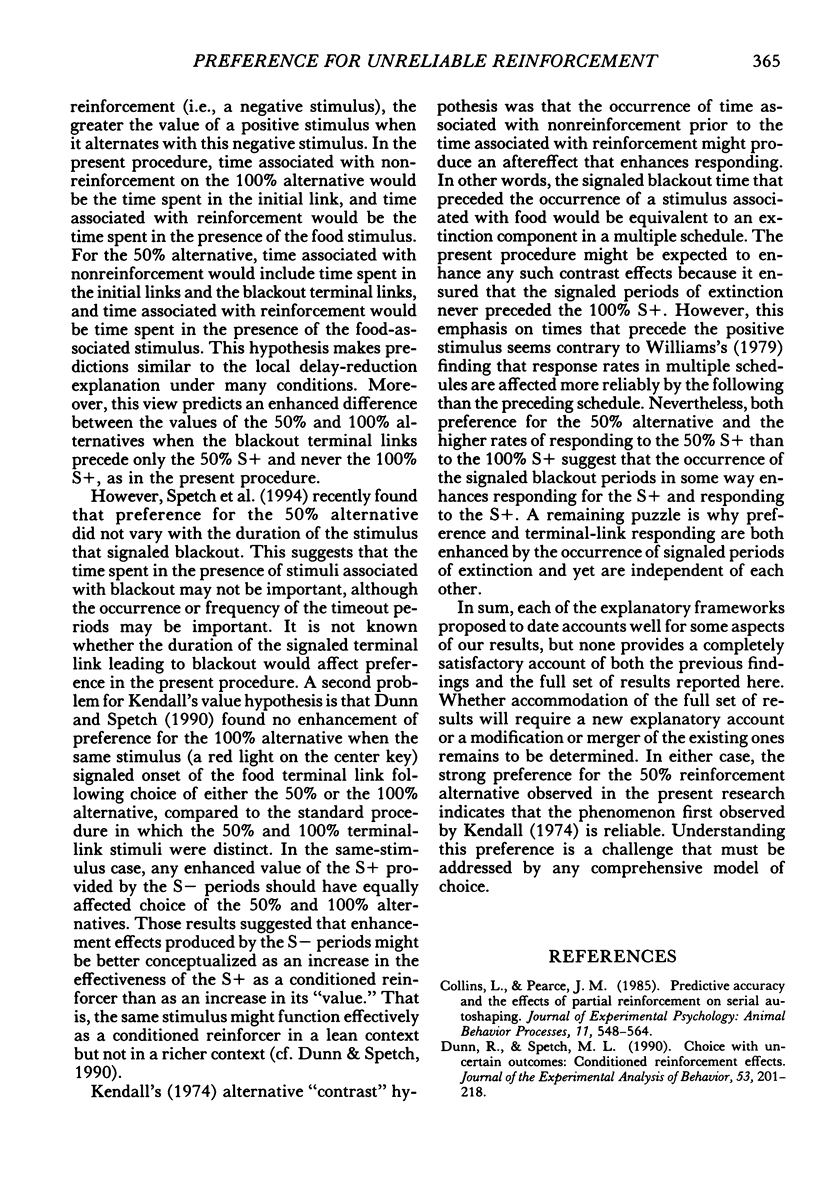
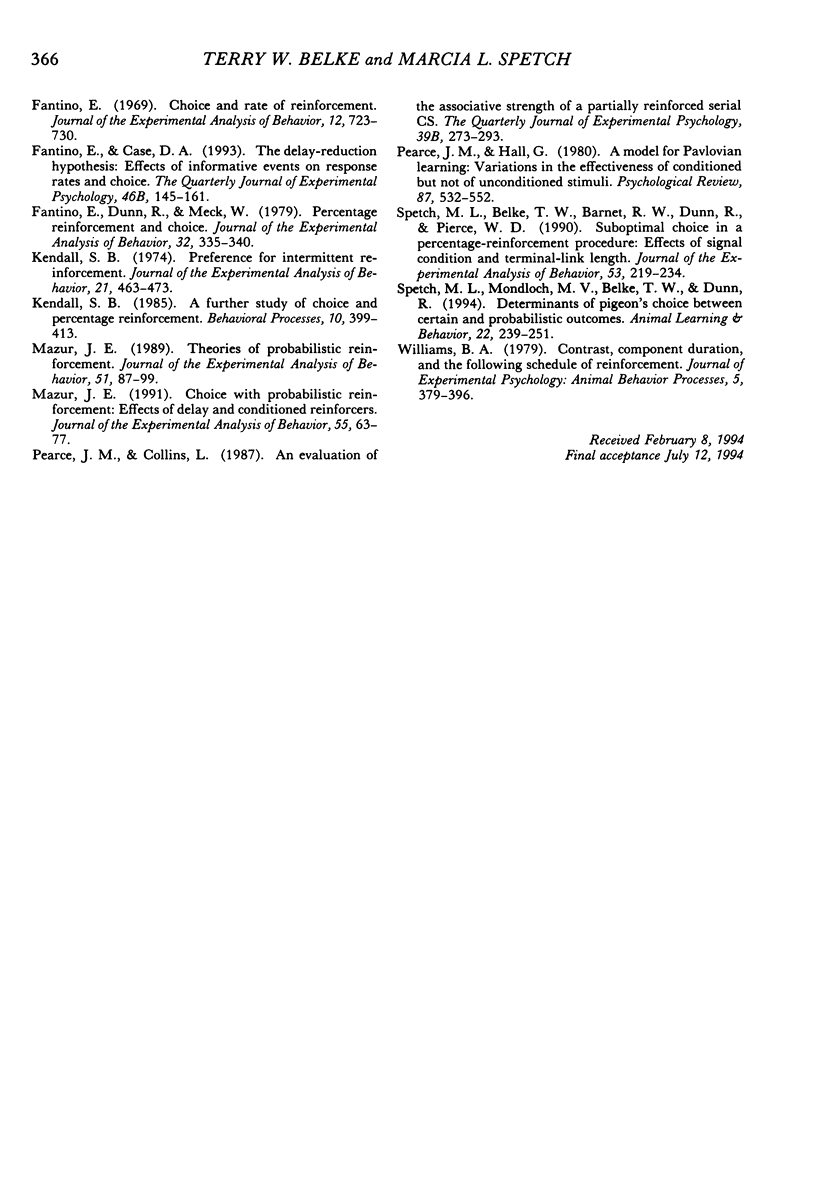
Selected References
These references are in PubMed. This may not be the complete list of references from this article.
- Dunn R., Spetch M. L. Choice with uncertain outcomes: conditioned reinforcement effects. J Exp Anal Behav. 1990 Mar;53(2):201–218. doi: 10.1901/jeab.1990.53-201. [DOI] [PMC free article] [PubMed] [Google Scholar]
- Fantino E., Case D. A. The delay-reduction hypothesis: effects of informative events on response rates and choice. Q J Exp Psychol B. 1993 May;46(2):145–161. [PubMed] [Google Scholar]
- Fantino E. Choice and rate of reinforcement. J Exp Anal Behav. 1969 Sep;12(5):723–730. doi: 10.1901/jeab.1969.12-723. [DOI] [PMC free article] [PubMed] [Google Scholar]
- Fantino E., Dunn R., Meck W. Percentage reinforcement and choice. J Exp Anal Behav. 1979 Nov;32(3):335–340. doi: 10.1901/jeab.1979.32-335. [DOI] [PMC free article] [PubMed] [Google Scholar]
- Kendall S. B. Preference for intermittent reinforcement. J Exp Anal Behav. 1974 May;21(3):463–473. doi: 10.1901/jeab.1974.21-463. [DOI] [PMC free article] [PubMed] [Google Scholar]
- Mazur J. E. Choice with probabilistic reinforcement: effects of delay and conditioned reinforcers. J Exp Anal Behav. 1991 Jan;55(1):63–77. doi: 10.1901/jeab.1991.55-63. [DOI] [PMC free article] [PubMed] [Google Scholar]
- Mazur J. E. Theories of probabilistic reinforcement. J Exp Anal Behav. 1989 Jan;51(1):87–99. doi: 10.1901/jeab.1989.51-87. [DOI] [PMC free article] [PubMed] [Google Scholar]
- Pearce J. M., Hall G. A model for Pavlovian learning: variations in the effectiveness of conditioned but not of unconditioned stimuli. Psychol Rev. 1980 Nov;87(6):532–552. [PubMed] [Google Scholar]
- Spetch M. L., Belke T. W., Barnet R. C., Dunn R., Pierce W. D. Suboptimal choice in a percentage-reinforcement procedure: effects of signal condition and terminal-link length. J Exp Anal Behav. 1990 Mar;53(2):219–234. doi: 10.1901/jeab.1990.53-219. [DOI] [PMC free article] [PubMed] [Google Scholar]
- Williams B. A. Contrast, component duration, and the following schedule of reinforcement. J Exp Psychol Anim Behav Process. 1979 Oct;5(4):379–396. doi: 10.1037//0097-7403.5.4.379. [DOI] [PubMed] [Google Scholar]


